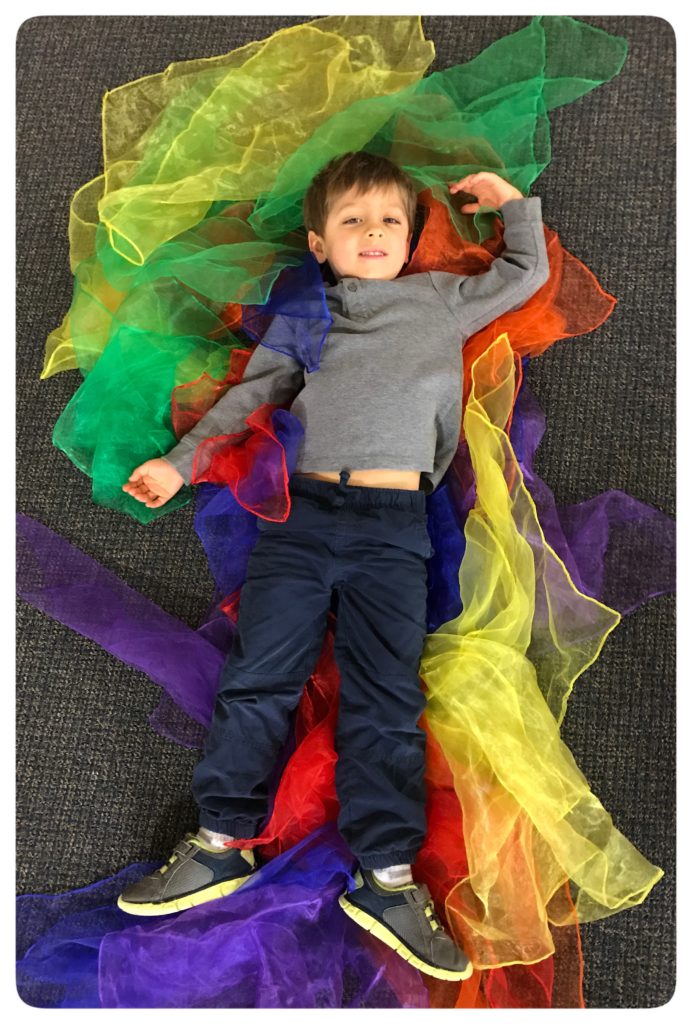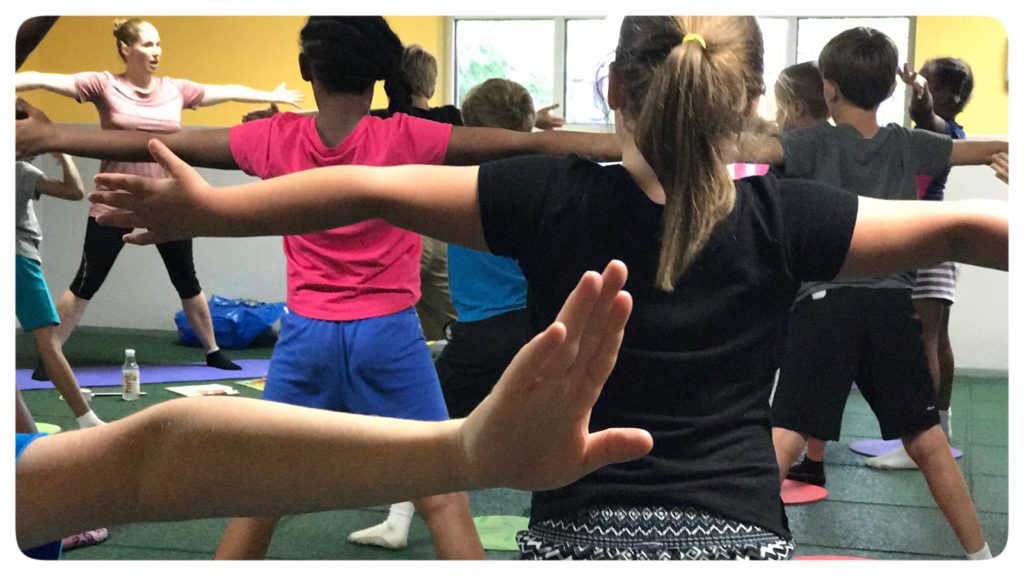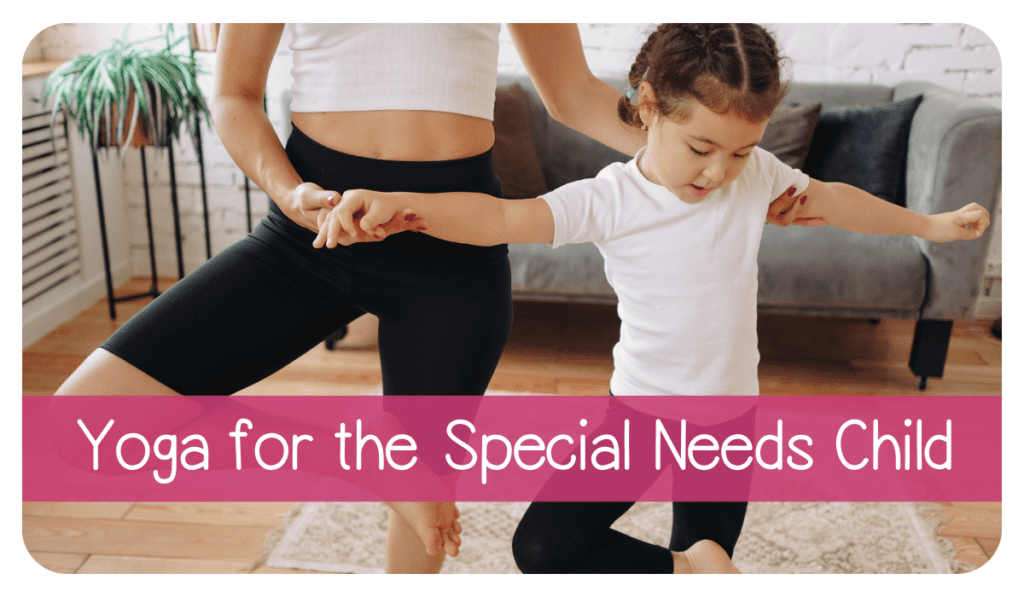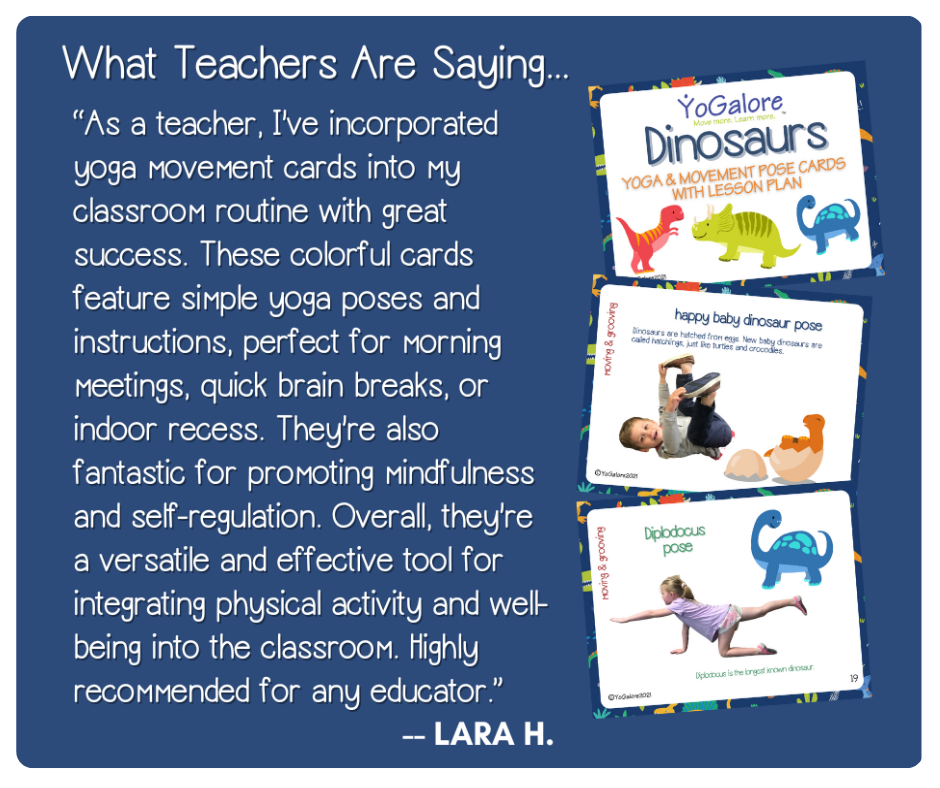Yoga and the Special Child by Sande Rutstein, OTR
Last year, I began to see a seven-year-old girl, whom I will call Lisa. She had been diagnosed with ADHD (Attention Deficit Hyperactivity Disorder) several years earlier. Lisa was a kind and anxious child who moved constantly. She was receiving occupational therapy and during the initial evaluation, her sitting tolerance for a fine motor task was 5-7 minutes. During some sessions, she frequently got up and down of her seat and sometimes, she would sit and stare for long periods. Lisa was tactile defensive and could barely tolerate being touched.
It is known that many children with special needs have one or many sensory deficits. They have difficulty integrating the information from their eyes, ears, hands, and body. They may not move easily and appear clumsy. Most learning problems are the result of poor sensory integration of all these systems. Each child demonstrates a different set of symptoms. Their nervous system is working an irregular way and they tend to have disorganized response to their environment. I have found that yoga is a stimulating way to reach children, especially those with learning differences. I have integrated yoga into the sessions of children with various diagnoses with positive results. Anyone can maximize his or her potential from consistent practice of yoga and these children are no exception. Yoga calms the physical body and once that occurs, the mind can quiet. Gradually, a child becomes more organized and focused. Yoga enhances flexibility has a positive effect on gross, fine, visual motor conditions. It also promotes strength and self-esteem and encourages a gentle spirit.
Yoga was implemented into Lisa’s occupational therapy program at school initially. Lisa required mostly hands-on assistance to be moved into various yoga poses also known as asanas. After about two months, Lisa was able to start imitating some of the simpler poses. She was able to tolerate up to 30 minutes of the yoga and afterwards, she became more relaxed and able to focus her attention. She could also sit and partake in a tabletop activity for a minimum of 15-20 minutes. One time, while her mother observed the yoga part of the session, she commented, “I guess she knows her body needs it.”
What is most evident after including yoga in the therapy sessions is that the children appear more organized, relaxed, have longer tolerance for sitting and performing fine motor tasks. Over time, they exhibit improved balance, increased eye contact and knowing where their bodies are in space.
Another wonderful experience involved a five-year-old boy, whom I will call Jake. Jake was diagnosed with autism. He was mostly nonverbal and he made minimal eye contact. My first meeting with Jake was on the school playground. He seemed to be aware of my presence, but made no eye contact until I began to sing an Indian chant, “Hare Om” (or “Hurry Home” as one of my other children sings it). The chanting attracted Jake. He stopped what he was doing in the sandbox and came closer in order to connect with me.
Many of the children seem to have fun with chants. Tambourines, drums, rattles and clapping with the chants which encourage a sense of rhythm and a means to work on coordination. Breathing exercises and imagery techniques are implemented to enhance relaxation. They often show excitement and their responses become more spontaneous than if I request them to perform a remedial-type task. For example, Jake’s teacher has reported that he appears much calmer after our sessions. She also stated, “Whatever you are doing with him and if you think it is the yoga, then I want to learn it.”
A last example of the efficacy of using yoga as a tool in treating children with special needs is Jamie, a client I see for private yoga therapy. At his first session he paced quickly around the room. I sensed immediately he would be a climber. He climbed to the top of the couch and tumbled down to the cushions. He crawled the length of the couch and attempted to stretch his leg out towards the end. His eye caught the nearby rocker and then he skipped over to it, sat down and began to spin. While he sat cross- legged in the chair, Jamie smiled, gazed up to the ceiling and happily hummed a tune. During the session, Jamie was able to tolerate 3-5 minutes of lying on the floor mat. It wasn’t long before Jamie grew to trust and feel comfortable with the routine.

I have been seeing Jamie for yoga on a weekly basis for about six months. Now, when he arrives, he may lay over a large Swedish gym ball or lies down on the mat in a relaxed way with his hands interlocked behind his head. There are times when Jamie seeks out the chair to spin or he may jump on the couch, but those behaviors have decreased. Jamie has begun to respond to instructions with some verbal clues. For example, he moves into a yoga pose called the bridge when given a gentle touch to his low back. He has begun to name a few poses on his own and there are times when he parrots my naming the poses as we move into each one. His eye contact has improved and he frequently includes my name as he says good-bye at the end of the session.
In addition to the basic education in the development of children, my training in occupational therapy includes Sensory Integration Education. This equips me with a better understanding of how various aspects of the environment are impacting a child. For example, when Jamie moves away towards the couch I know that he has reached his limit and he is taking the time to reorganize himself, after which he is often able to continue the session.
Jamie is a very talented, bright, sweet boy who has been diagnosed with autism. He has exhibited some typical characteristics of autism and some very individual qualities. In my work with the children in my private practice where yoga is our primary activity, I have observed that each child has very special traits and that yoga is a door to their individual soul. Not all children with learning difficult are autistic. The children I treat have various diagnoses including learning disabilities, cerebralpalsy, Downs Syndrome, FDD (Pervasive Developmental Disorder), ADD (Attention Deficit Disorder) or ADHD (Attention Deficit Hyperactivity Disorder).
Yoga is more than an adjunctive therapy because it is a practice that can be used throughout a lifetime. My teacher, Sonia Sumar, emphasizes that therapies are generally discontinued after a particular condition is corrected. In the case of special children, yoga is being used as a therapy, but is in fact a centuries old path of self-development and self- states that practicing yoga is a small sacrifice for something that can enrich one’s life on any levels.
It should be stressed, however, that yoga must not be substituted for a program that has been recommended by, physician, but results are most positive when the program is augmented with traditional treatment modalities.

Parents of children with special needs have additional stresses and yoga is known for its capacity to reduce stress. All parents can be good role models and nourish their child’s development and home program by engaging in a yoga class themselves.
Children with learning differences are full of wisdom and spirit. It is an enormous privilege and it gives me great gratitude and joy to see the difference yoga is making in their lives.
Sande Rutstein, OTR, is an occupational therapist with a special concentration in pediatrics. She works in the Marin County Schools with children with special needs and has a private practice in San Rafael. Sande also teaches yoga to parents and families of children with special needs and gentle movement classes to adults with special- needs and those living with chronic illness. Recently, she co-developed a partner yoga class for adults with MS (multiple sclerosis).
She can be reached at:
The Yoga Nest, A Nurturing Place for Children and Adults with Special Needs at (415) 789-8186.
Integrative Yoga Therapy
a pioneer and leader in the field of yoga therapy





